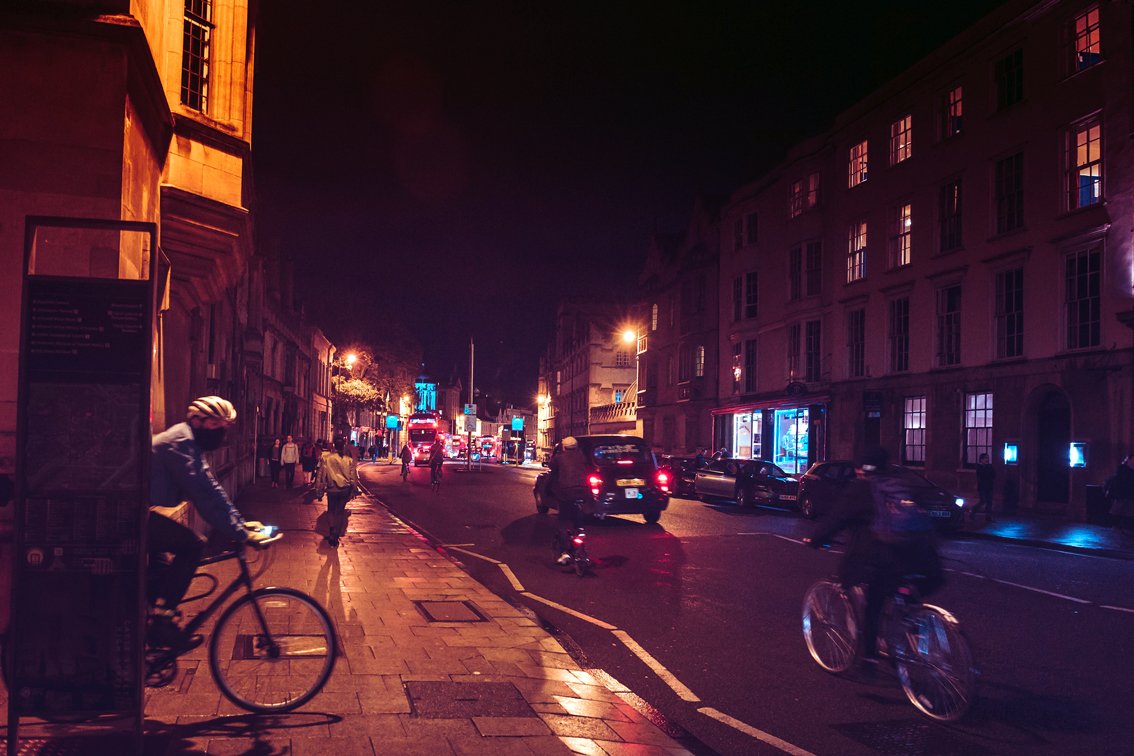Time to find your lights

By Jonny Ives
Jonny is a journalist and a member of Cyclox
John Keats (1795–1821) was not a cyclist. Historians will note that he was born too early, and died too young, to be part of the late Victorian cycling boom. Literary scholars might ponder whether his romantic inclinations may in any case not have suited him to the mechanical.
At this time of year we bike riders take note of one of his most celebrated works. With the summer coming to an end, Keats turned his thoughts to mists and mellow fruitfulness and wrote ‘To Autumn’. If he had owned a bike he would surely have been musing on another subject entirely: where on earth did I put my lights?
we need to make sure that we have some lights and that they are working properly
Keats had plenty of other things to worry about. But for the huge number of Oxford residents and visitors who regularly ride a bike, the first hint of a chill in the air and shorter evenings mean we need to make sure that we have some lights and that they are working properly.
What the Highway Code says
Rule 60 of the Highway Code (the revised 2022 edition is available in bookshops and online) makes the basic requirements clear:
At night your cycle must have white front and rear red lights lit. It must also be fitted with a red rear reflector and amber pedal reflectors, if manufactured after 1/10/85.
It also notes that “flashing lights are permitted”.
In the text of the Highway Code the word ‘MUST’ is printed in red capitals for emphasis. Also in red but in smaller text is a reference to the relevant regulations of the RVLR, the Road Vehicles Lighting Regulations.
What the law says

If the reference to reflectors and manufacturing dates in Rule 60 of the Highway Code hints at hidden depths to the regulations, the RVLR is where you will find them. Anyone with legal training and endless patience may find the RVLR of interest and perhaps even of help. The rest of us have the great good fortune to have access to Cycling UK’s lay-person’s interpretation of the legislation. This provides plenty of detail but with an emphasis on clarity.
The guide states that “It is illegal to cycle on a public road after dark (defined as between sunset and sunrise) without lights and reflectors” but not when a cycle is stationary or being pushed. A cycle should have reflectors fixed to the rear of the bike and the front and rear of each pedal. You should have at least one white front light positioned centrally or to the off (right-hand) side of the bike. It needs to be fixed to the bike and not more than 1,500 mm from the ground. The rear light should also be fixed to the bike, centrally or on the right side and between 350 mm and 1,500 mm from the ground.
There are plenty more details to take on board. For example:
- What lights do you need for a trailer? (Rear light and triangular red reflector.)
- What about lights mounted to your helmet? (Probably not legal as your only lights).
And thinking of mists and mellow fruitfulness, cycles are not legally required to show lights during daylight hours even in poor visibility, although cars are.
While much of the Highway Code is advisory, it tells us what we MUST do to stay legal on a bike.
Finding your lights, making sure they work and fixing them onto your bike is a good start.
Photo credits
iStock
